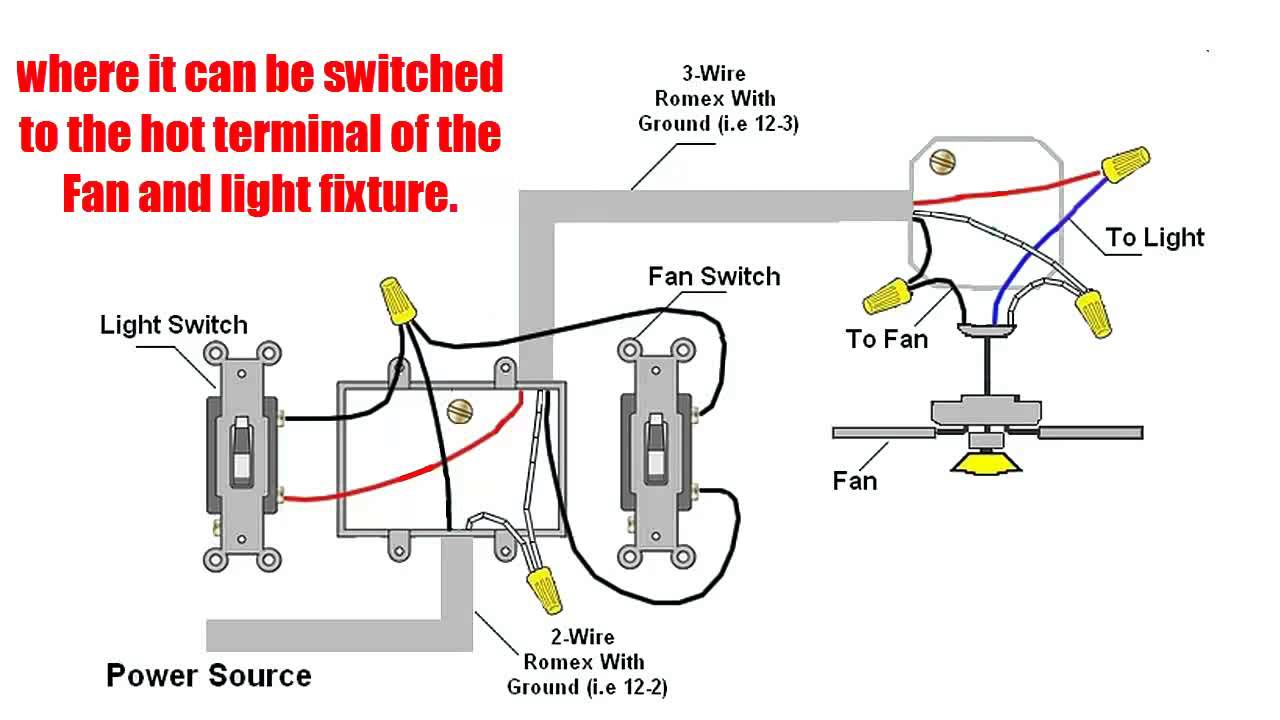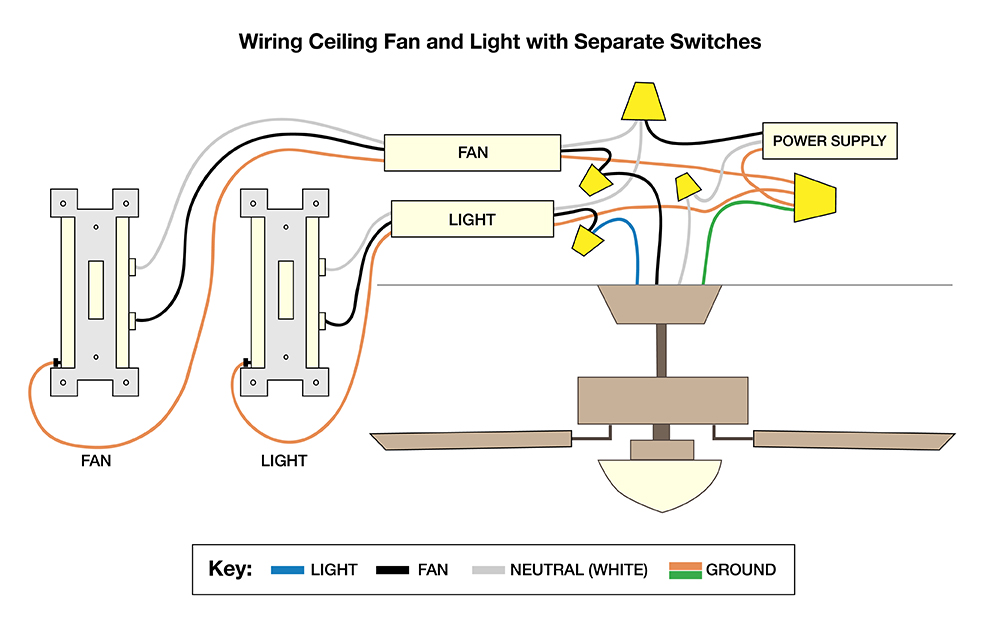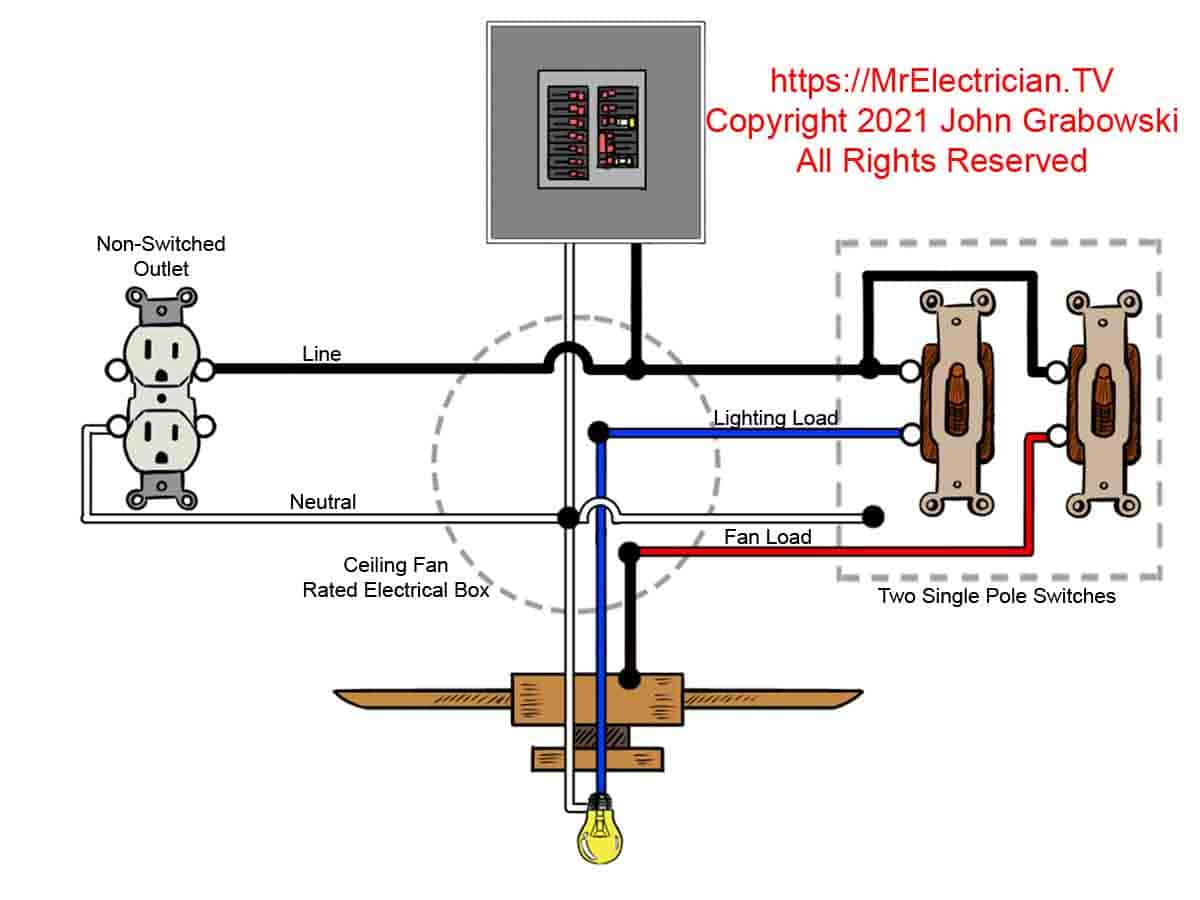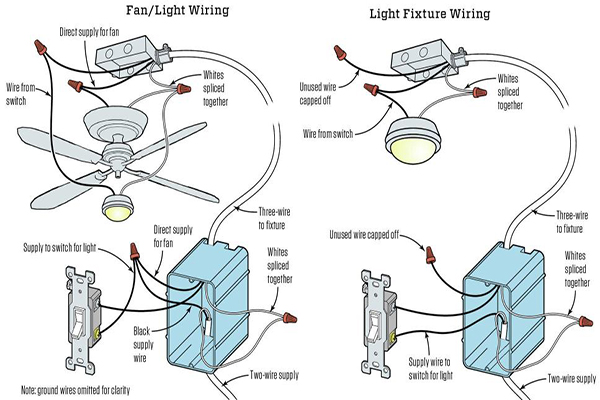Okay, let's talk ceiling fans. And not just *any* ceiling fan. We're talking about the mythical creature with two switches controlling it. Dun, dun, DUN!
Some people are intimidated. But I'm here to tell you it's not rocket science. More like…electricity science. Which, admittedly, *can* feel like rocket science sometimes.
Now, my hot take? Two switches are superior. It's an unpopular opinion, I know. Fight me in the comments.
The Great Wire Adventure: Tools You (Probably) Have
First, gather your gear. You’ll need your trusty screwdriver. And maybe a voltage tester, because electricity isn’t a game.
Don’t forget wire strippers. And possibly a flashlight. Unless you enjoy working in the dark. Which… some people do? No judgment.
Most importantly, flip that breaker OFF. I repeat, OFF. Consider this your official (and legally binding… just kidding) safety warning.
Deciphering the Rainbow: Wires Explained
Wires are like people. They come in different colors. Each color has a job. It's a well-organized system, unlike my sock drawer.
You'll usually see black, white, and green (or bare copper). Black is usually your hot wire. White is neutral. Green is ground. Easy peasy, right?
Sometimes you get extra colored wires. Red is common for controlling the fan light separately. Blue sometimes, too. It depends on the fan model.
The Connection Conundrum: What Goes Where?
Here’s the fun part: connecting the wires. This is where the magic…or mild confusion…happens.
Remember that black wire from the ceiling? Connect it to the black wire from the fan. Use a wire connector, those little twisty things.
Then, do the same with the white wires. White to white. It’s like a wire dating app. Match made in electrical heaven.
Ground wires (green or bare copper) also need to be connected. This is important for safety. It’s the wire that saves the day if things go wrong.
Now, for the two switches! One switch probably controls the fan motor. The other controls the light.
The red wire usually goes to the light switch. The *black* wire often goes to the fan speed switch.
Test the Waters (Carefully): The Moment of Truth
Once everything is connected, tuck the wires neatly into the electrical box. No one likes a messy box.
Carefully reattach the fan to the ceiling. Make sure it’s secure. Nobody wants a ceiling fan crashing down on them during movie night.
Now… the moment of truth. Flip the breaker back ON. Prepare for either victory or a trip back to step one.
Test both switches. Fan on? Light on? If yes, congratulations! You are a ceiling fan wiring wizard.
If not, don't panic. Double-check your connections. Maybe consult the fan’s instruction manual. Or call a professional.
Because sometimes, let's be honest, electricity *is* rocket science. And there's no shame in asking for help from someone who actually knows what they're doing.
But hey, at least you tried! And now you have a great story to tell at parties. "Yeah, I almost wired a ceiling fan..."
Just, maybe don’t offer to wire anyone else's fan. Unless you *really* know what you’re doing.













:max_bytes(150000):strip_icc()/how-to-wire-a-ceiling-fan-5216529-Final-01-17123c6745dc416fb8fc308e6ffcbc88.jpg)











